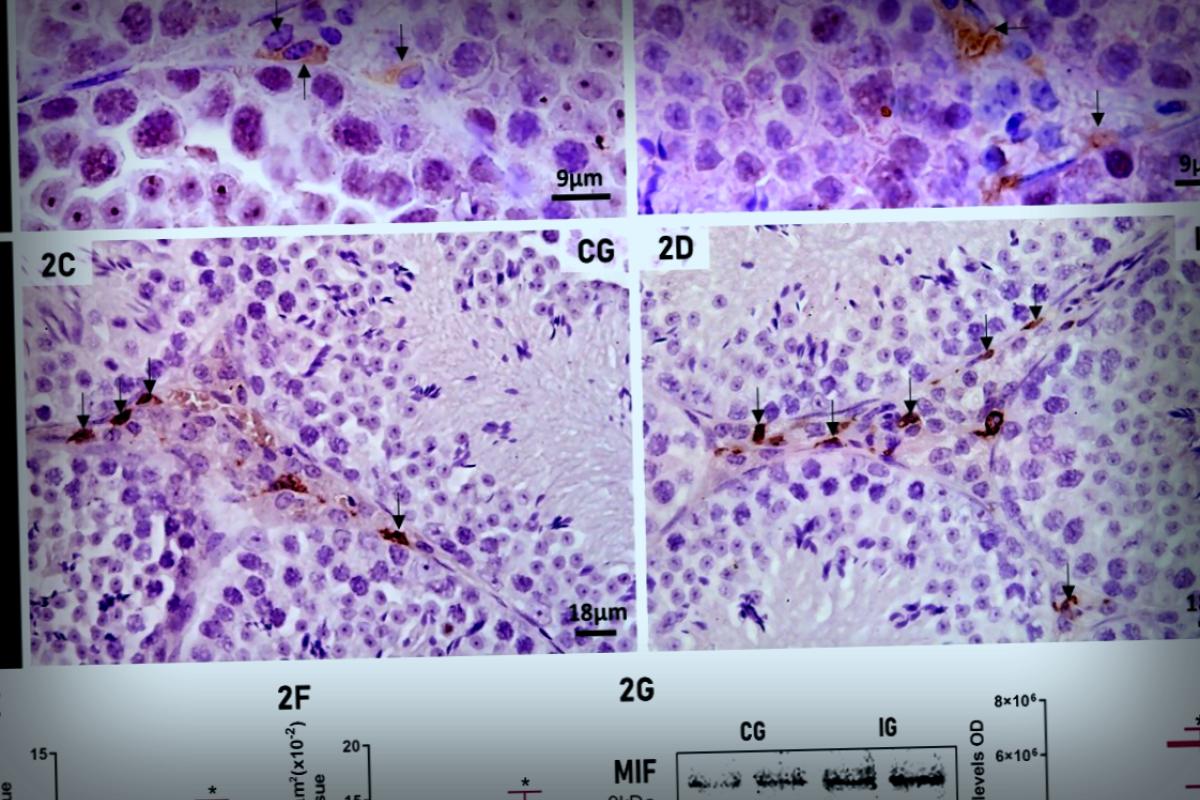There’s a new study out that dives into how COVID-19 messes with male hormones, specifically looking at its effects on testosterone production. It turns out the virus hijacks the cells in the testicles that create this hormone and messes around with their metabolic processes.
Researchers from the Araraquara School of Dentistry at São Paulo State University and the Ribeirão Preto School of Medicine at the University of São Paulo conducted this fascinating research using genetically modified mice. The findings, published in the journal Frontiers in Cellular and Infection Microbiology, show that for the first time, they found SARS-CoV-2 particles nestled within lipid inclusions and testosterone-producing organelles in Leydig cells.
According to Estela Sasso-Cerri, a professor involved in the study, the coronavirus figures out a way to disrupt how these testicular cells work: “Once the virus gets into Leydig cells, it uses their lipid metabolism pathways to replicate itself, which leads to lower testosterone levels because these cells also have high concentrations of ACE2 receptors that make it easy for the virus to enter.”
Additionally, these Leydig cells are crucial because they naturally store cholesterol, essential for making testosterone, and thus become prime targets for viral attack.
The team worked with specially bred mice that express the ACE2 receptor, which means when they get infected with COVID-19, they develop the disease much like human beings. This model helps shine a light on how the virus behaves inside the body.
In their exploration, the researchers noted that both mouse and human testicles showed high ACE2 concentrations in the same types of cells. This backs up the relevance of their animal model and reiterates that the testicles are indeed vulnerable to SARS-CoV-2.
Impact on Lipid Metabolism and Inflammation
When it comes to how the virus changes metabolism in these cells, the results were striking. The SARS-CoV-2 takes over the cholesterol that would ordinarily be used to produce testosterone to make copies of itself. As a result, even though testosterone levels in the infected Leydig cells drop, these cells were st with fats because the virus draws in more cholesterol for its replication.
A further analysis revealed unexpected changes in Leydig cells’ behavior post-infection. Instead of just making steroid hormones, they began producing large amounts of pro-inflammatory cytokines, an unusual activity for these cells. Salmo Azambuja de Oliveira, a key researcher on the team, mentions that this inflammatory response could further mess with testosterone production, impacting these cells’ primary role.
The implications of these findings could be significant. They help clarify why men with severe cases of COVID-19 are experiencing lower testosterone levels and may even elaborate on men’s vulnerability to the virus compared to women, along with the differences in mortality rates.
As Sasso-Cerri suggests, these discoveries could pave the path for creating critical markers that help gauge the severity of COVID-19 and inspire potential therapies involving lipid-lowering drugs that could help curb the virus’s actions.
For further reading: Salmo Azambuja de Oliveira et al, SARS-CoV-2 exploits steroidogenic machinery, triggers lipid metabolism for viral replication and induces immune response in Leydig cells of K18-hACE2 mice, Frontiers in Cellular and Infection Microbiology (2025). DOI: 10.3389/fcimb.2025.1538461
Information provided by FAPESP
This article was originally published on Medical Xpress.





















